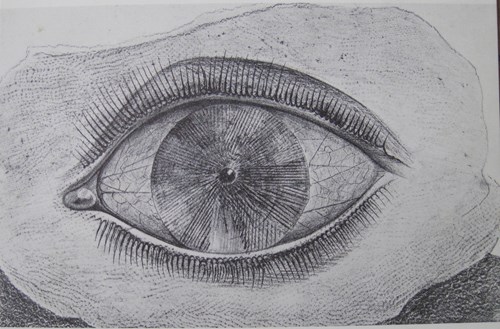Joint projects take many forms and can generate all kinds of spin-offs. Three years ago, the V&A Research Institute (VARI) asked Roger Kneebone to recruit a number of Guild members (including members of the Outreach committee) to join a working party of craftspeople, artists, curators, academics, musicians and medics. The mission was to dig into how we think about what we do, analyse a wide range of issues concerning the arts – practical, philosophical, theoretical, linguistic – and with luck come up with, if not solutions, then useful insights.
The group wasn’t just a talking shop. It came up with many practical projects, such as one the Guild contingent devised specifically to engage the group’s academics in something hands-on, which they might find challenging, but also thought provoking, and 'widening the understanding of craftsmanship' which is a key purpose of Guild outreach.
It was a sort of Chinese Whispers, but usually the game of Chinese Whispers sticks to a common language of words, and this exercise mixed two languages – words and images. Participants divided into two groups at opposite ends of the Hall, where tables were spread out with paints, coloured pencils, crayons and paper. Each person chose one of a selection of carefully chosen reproductions of paintings and drawings, and as clearly as possible, wrote a description of their chosen image, in such a way that someone from another table, (who had not seen the image) would be able to reproduce the image solely from the written instructions.
Switching languages
After half an hour, the reproductions were collected up, and the written descriptions were exchanged with people from another table. Everyone then had a description, written by somebody else, of a picture they hadn’t seen, and from those instructions they had an hour to reproduce the original picture.
Translating back
Two things helped – wine and the promise of a good supper, together with the great good humour of the academics, who all were being pushed out of their comfort zone. When all the results were put together with the originals and the written instructions there was astonishment at just how little information had been communicated, and how hard it had been to re-constitute anything much of the message.
The results!
Gunther Kress, Professor of Semiotics at UCL used his experience of this event as the basis for his annual lecture, on the subject of 'Translation'.

For translation - Max Ernst - The Wheel of Light
The result
He wrote to us afterwards 'while writing is still the privileged mode (in schools, often; still for most exams, etc.) the game highlights the shortcomings of an approach based on 'commonsense'. Writing does particular work, but it can’t do all the work. The traditional version of Chinese Whispers relies on a meaning resource shared by the players – speech. The 'twist' lies in the fact that there is no shared meaning-resource - no shared 'code' - in switching from image to writing and back. The game brings out a strong unsettling sense that writing and image each enables meanings to be made which cannot easily be made in the other, or actually be made at all...'